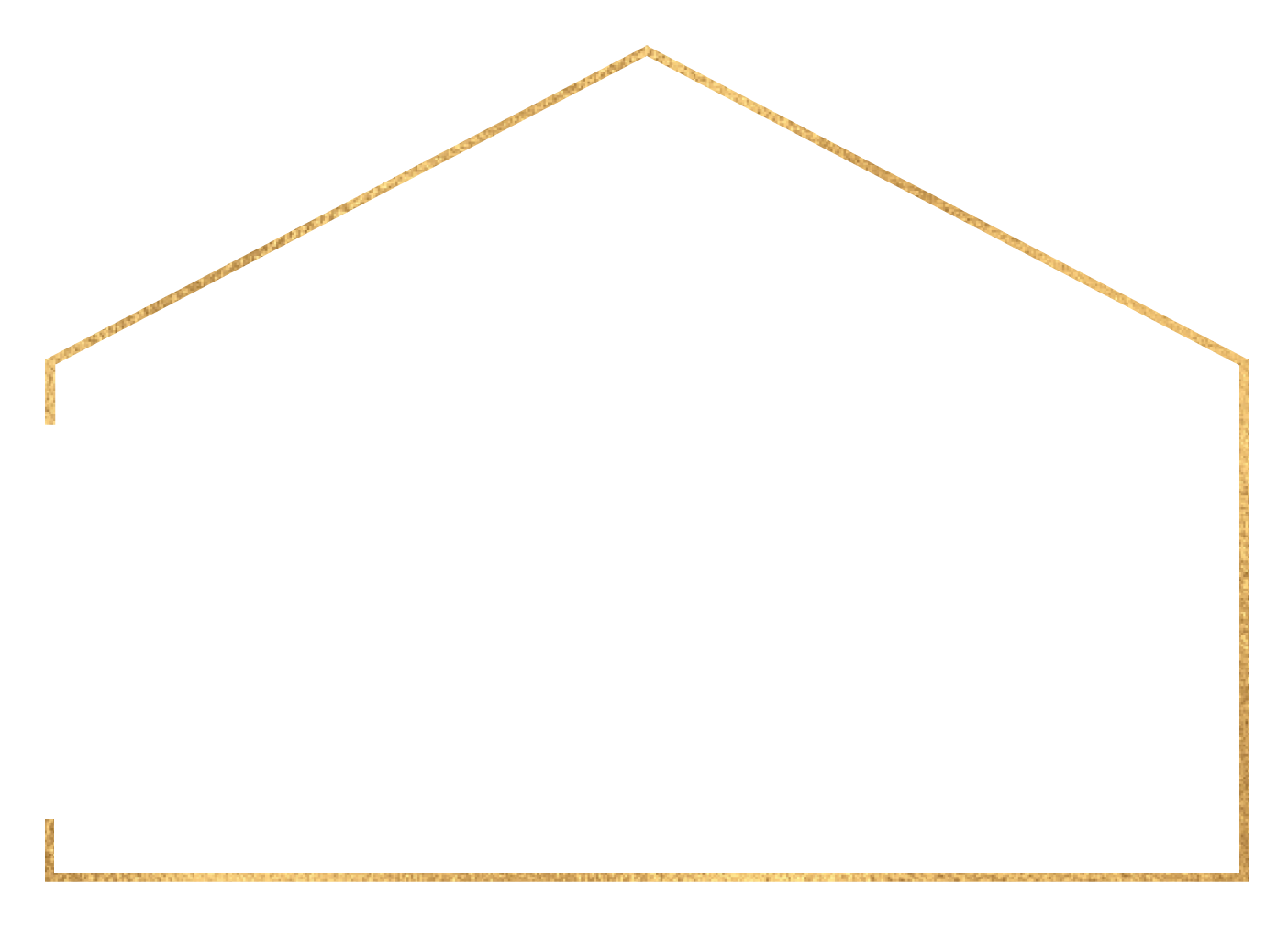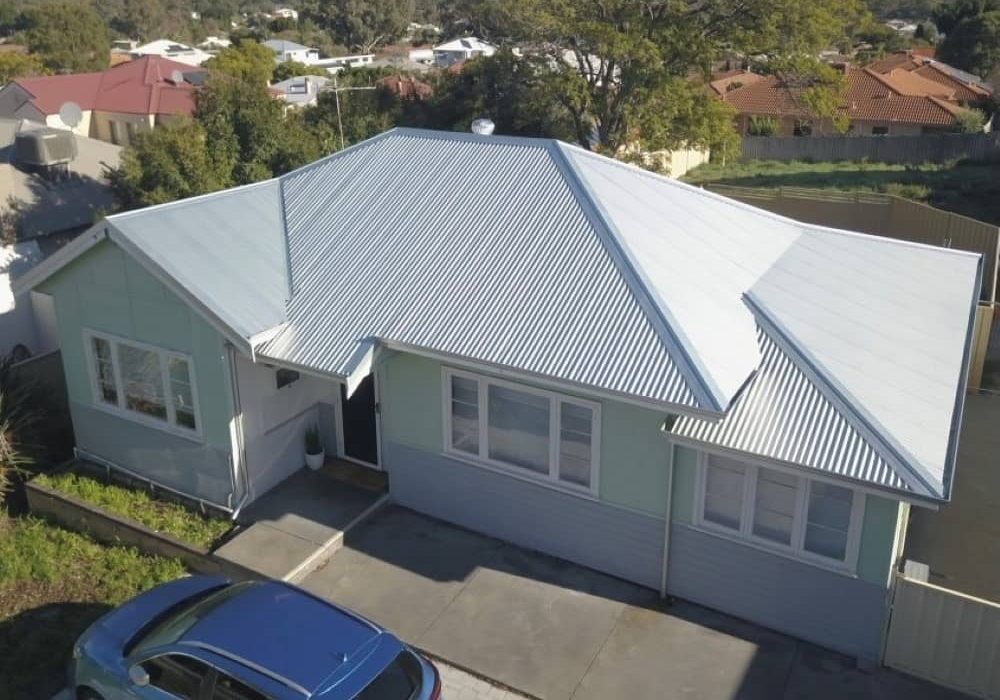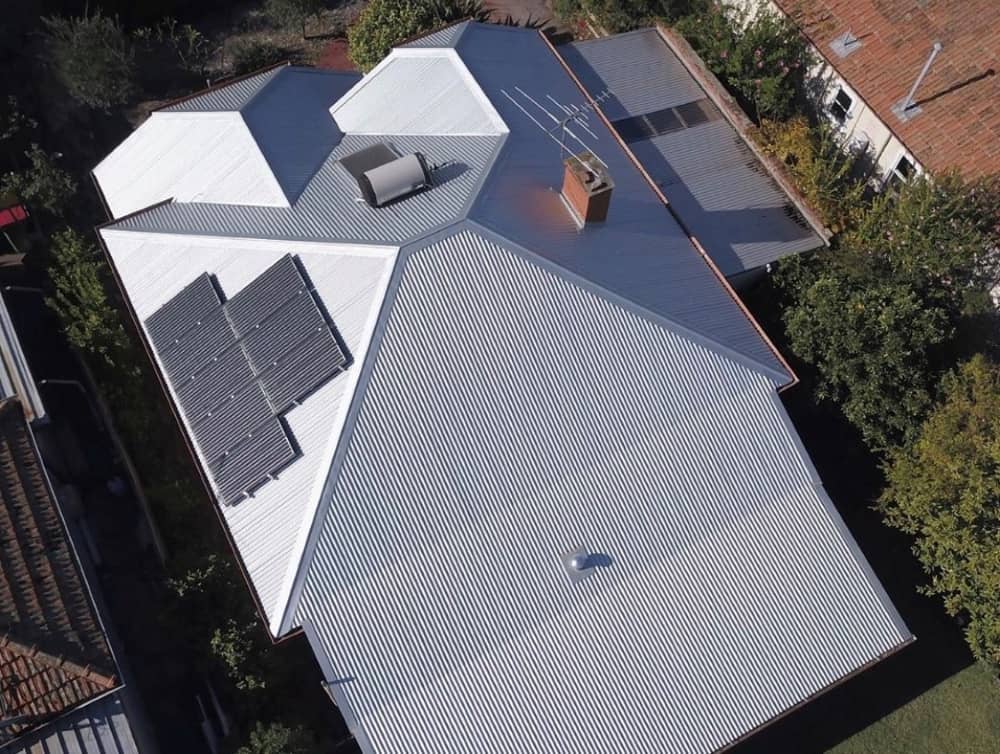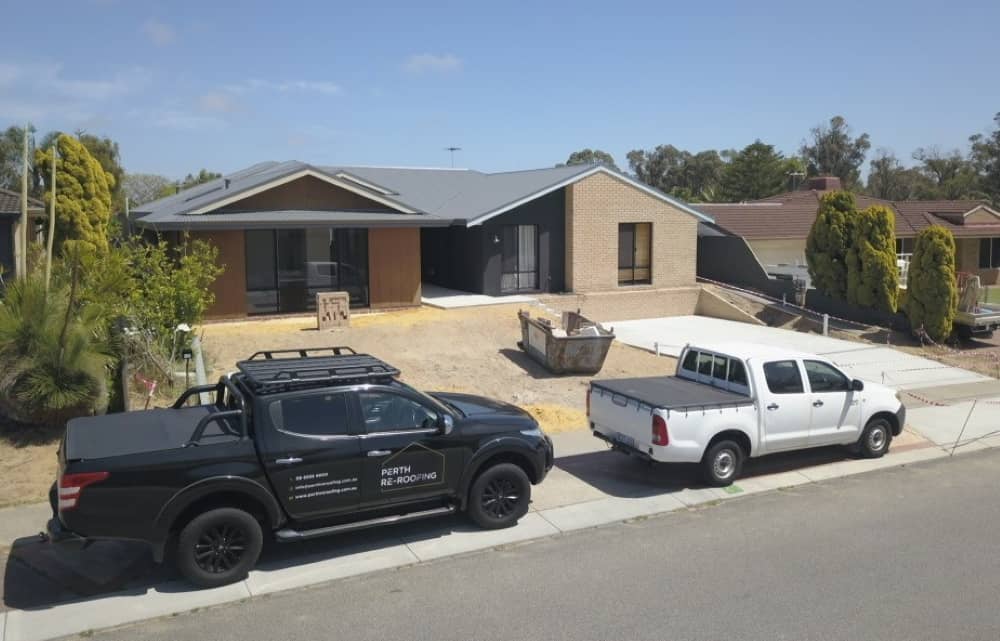Metal roofs have always been popular across Australia. The material is lauded for its durability and cost-efficiency, often lasting several decades. And perhaps that’s why metal roofs are dubbed as the “forever roofs,” especially in re-roofing over tiles and other temporary, less sturdy roof types. But is a metal and tin roof the best choice for your home?
Before we get into the benefits and drawbacks of tin and metal roofs, it’s probably helpful to quickly define these two roof types. Many people wonder if a tin roof is the same as metal (or vice versa) and can the terms be used interchangeably?
Calling some roofs “tin” is a bit of a misnomer, but it is widely accepted anyway. Tin is not a popular roofing material, but the term describes metal, steel, and galvanised steel. So, it’s not entirely wrong to call a metal roof “tin” IF it is coated in tin. All tin roofs are a type of metal roofing. However, metal roofing can be made of various metals, such as steel, aluminium, and copper, not just tin.
With that out of the way, let’s talk about what this blog is about: the pros and cons of tin and metal roofing.
Why Choose Tin and Metal Roofing
There are many reasons why Aussie homes opt for tin and metal roofs, including:
- Longevity: Metal lasts for a long time, usually for several decades. Some high-quality metal roofing products can even last for more than a century. Of course, a huge factor is your location. However, in Perth and other sunny areas, metal roofs can easily outlive tiles because of the material’s ability to reflect heat and light rather than absorb it. Metal products, including tin, are estimated to last two to three times longer than other materials like clay tiles. On average, metal and tin roofs under ideal conditions have no issues for up to 60 years. Metals like copper and zinc have been proven to last for well over 100 years.
- Cost-Efficiency: Looking at the lifespan of metal roofs, you can easily conclude it’s one of the most cost-efficient roofing materials available.
- Durability: You do not have to worry about strong winds, cyclones, fires, and hailstorms with a tin or metal roof. It can resist almost anything that Mother Nature can throw at it.
- Safety: What about lightning strikes, you ask? Here’s the good news: metal roofs do not spark and cause fires, even during a wildfire.
- Energy-Efficiency: As mentioned above, metal roofs reflect light and heat, making them one of the most energy-saving materials you can use for your home. Living in Perth, where summers can get unbearably hot, you need all the help in cooling that you can get. With metal roofing, you can reduce cooling costs by up to 25% because the material does not absorb heat.
- Low Maintenance: Metal and tin roofs require little upkeep. As long as you do not have your roof near trees and perhaps some sandy beaches, your roof can outlast all the other roofs in your neighbourhood. This is not to say that you are not required to care for your roof. Just like every other material, metal roofs need maintenance. Your tasks will differ on the type of metal roof you have. Traditionally, however, you need to check the flashing around the penetrations of the roof to avoid leaks and replace it if necessary. Other than that, you only have to clean and remove debris that could potentially harm your roofing.
- Environmentally Friendly: Metal and tin roofs are eco-friendly from a waste-reduction standpoint. They usually contain a large chunk of recycled steel whilst the roof itself is 100% recyclable. Because the material helps in energy efficiency, it is perfect for green homes and can even improve home value by up to 6%.
Some people may disagree, but metal and tin roofs are stylish. However, it all depends on your taste. If you avoid trying to stand out like a sore thumb, your roof will not detract from the overall look of your house. Instead, it will enhance the property’s appearance without calling for unwanted attention.
Why Tin and Metal Roofs May Not Be the Right Choice for You
Now, it’s time for some cons. Here are the reasons why some Aussies are not too fond of tin/metal roofs:
- Noise: The sound of the pitter-patter raindrops can be calming for some people. However, the noise of rain when it hits metal roofs may be a concern for you. A good roofer will help you deal with this issue, usually by installing more insulation layers and sheathing to reduce the sound you hear inside your house.
- Dents: Durable metal roofs do not get dented easily, but sometimes they are unavoidable. It does not mean the material or the roofer service was not worth your money. It’s just something that can happen from time to time.
- Expensive: We’ve briefly touched on adding more insulation and sheathing to minimise noise due to rain or anything hitting your roof. It’s useful, but it will add more costs to your roof installation. Also, dented metal roofs that should be fixed right away will require you to pay extra.
- Material Assemblies: Fasteners are a common issue with metal and tin roofs. They can get dislodged as they expand and contract due to weather conditions.
- Colour Mismatch: Inconsistencies in how your roof looks may give you headaches if you want to add a home extension later. It’s challenging to find the exact match of metal used on your roof, especially after its years of existence.
Despite the disadvantages, many Aussies still love metal and tin roofs. After all, the benefits generally outweigh the drawbacks.
Do you have a tin or metal roof? Let’s help you extend your roof’s life. Contact Perth Re-Roofing when it is time to re-roof your home with quality roofing materials, professional service, and our customer-first process.



